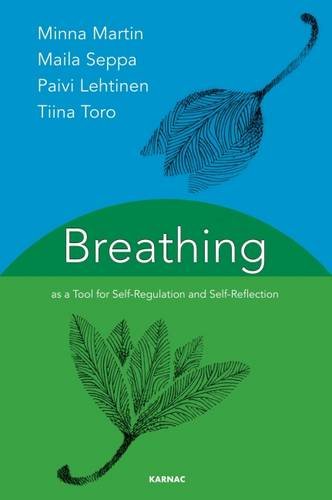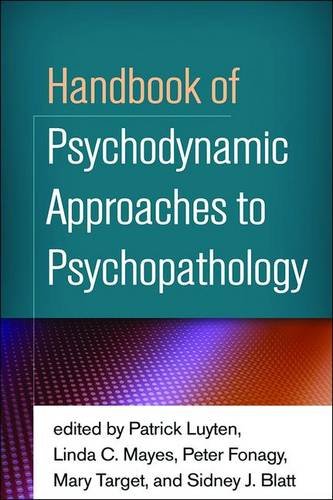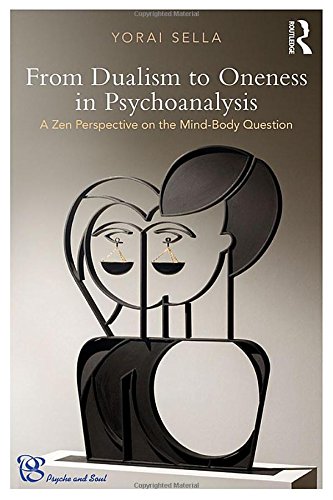Breathing as a Tool for Self-Regulation and Self-Reflection

Book Details
- Publisher : Routledge
- Published : March 2016
- Cover : Paperback
- Pages : 278
- Category :
Individual Psychotherapy - Category 2 :
Popular Psychology - Catalogue No : 37753
- ISBN 13 : 9781782203834
- ISBN 10 : 1782203834
There are currently no reviews
Be the first to review
The book describes how to use breathing as a medium for self-regulation and self-reflection and how balanced breathing thus helps to promote mental and physical health and alleviate symptoms resulting from imbalanced breathing. The authors describe applications of psychophysical breathing therapy in many areas of life, developed by both themselves and other professionals trained by them.
The approach of the book is based on the interactional aspects between mind and body. A person’s breathing style influences their relation both to themselves and to others – and vice versa, and thus mental and also physical health. A comprehensive theoretical description of the psychophysical regulation of breathing and the consequences of imbalanced breathing is complemented by material derived from the authors' extensive clinical experience. Psychological orientations used by the writers include object relations theories, and psychodynamic, cognitive, brief and group therapy theories. As a new aspect the writers introduce how breathing patterns are learnt in early interaction. The writers also acknowledge how physical factors affect and interact with psychological factors in producing imbalanced breathing.
Psychophysical breathing exercises seek to restore natural breathing appropriate to the physical needs of the body. People are helped to observe and assess sensations, emotions, and thoughts in connection with changes in breathing, thus learning in a very concrete way how mind and body interact. A key aim of the exercises is to increase the awareness of how breathing reacts in interpersonal interaction. That is why the writers prefer group therapy. A prerequisite to learning new ways of breathing is that the person feels she and her breathing are accepted as they are. Learning to calm down is another key aspect in the therapy. Instead of anatomical concepts mental images are used.
Reviews and Endorsements
‘We live in an era of increasing human population, hence of globalisation and climate change. The individual faces increasing uncertainties and changes in living conditions. Therefore, options for self-regulation are welcome. This book describes the possibilities and effects of an approach to psychophysical integration, using breathing, developed over forty years. Psychophysical integration means that we inhabit a living body but also live in our mentally constructed reality. The two realities tend to split, but when they integrate we become more resilient, realistic and adaptive beings. Breathing is a proper tool to this end: it is not only a vital biological function; it is also part of posture and movement, and also instrumental in our self-awareness. We receive feedback on ourselves from it, but may also partially regulate our breathing. Readers will benefit from the insights offered in this book.’
--Jan van Dixhoorn, Director of the Centre for Breathing Therapy, Netherlands, and associate editor of the International Journal of Stress Management
About the Author(s)
Minna Martin is a psychologist and psychotherapist with advanced level special training in cognitive-analytic therapy (CAT) and training in psychophysical psychotherapy. In 2015 she was named Psychologist of the Year in Finland. Her first professions were physiotherapist and physical education instructor. Along with her work as a psychologist in student health care, Minna works as a psychotherapist and trainer. She provides training for professionals in the use of the psychophysical breathing therapy method and leading of social anxiety groups. In addition, she has given lectures on these topics at international congresses. She has developed both individual therapeutic approaches and various types of group work based on psychophysical breathing therapy. Minna has written articles for professional journals and books, as well as guide books for patients with various problems.
Maila Seppä originally trained as a movement therapist. She is one of the main forces behind the spread and establishment of psychophysical psychotherapy in Finland. Working with her patients she noticed the close connection between the regulation of breathing and feelings. She developed a short-term therapy method to teach first-aid techniques for controlling anxiety and to use breathing as a route to the mind. More than 700 university hospital patients have attended breathing school run by Maila Seppä. But Maila's work has not been restricted to patients alone. Personnel groups from numerous fields have seen Maila to learn to cope with their work and to get to know themselves, their patients or their students better. Today, more than 300 people from various groups of health care professionals around Finland have participated in the training for breathing school instructors that was developed based on Maila's work.
Päivi Lehtinen is a special psychologist, Licentiate in Psychology, psychodynamic psychotherapist and family therapist, who has also studied physiology. She has worked for thirty years as a psychologist in a general psychiatric outpatient clinic at a university central hospital, and her cooperation with Maila Seppä dates back many years. Päivi has developed a treatment method for people suffering from symptoms of imbalanced breathing, with the breathing school method (a psychophysical breathing therapeutic short-term therapy group) as a central element. Another main area of her work is cooperation with patient groups from the department of gynaecology, such as women fearing delivery.
Tiina Törö is a graphic designer and relaxation therapist, with a Bachelor’s degree in graphic design. She has experience of working with people recovering from mental health problems. In addition, she has acted as the executive manager of a patient association, as a leisuretime instructor for the elderly and as a leader in Hengittävä hiljaisuus (breathing silence) retreats. She is a trained breathing school instructor. As a person prone to developing breathing symptoms herself, Tiina Törö represents the book’s largest target group in the working group.
Hilkka Salmén is a qualified translator with a diploma in translation (DKK) from the Turku Language Institute and a bachelor’s degree from the University of Turku. She founded her translation agency, Kääntöliike, in the year 2000. Before that, she worked as a translator in a translation agency specialising in medicine and in a large multinational pharmaceutical company. She has held courses in medical translation at Turku University. As an amateur singer, she has a personal interest in the book’s topic.
Customer Reviews
Our customers have not yet reviewed this title. Be the first add your own review for this title.
You may also like
The Polyvagal Theory: Neurophysiological Foundatons of Emotions, Attachment,...
Stephen W. Porges
Price £35.00
From Dualism to Oneness in Psychoanalysis: A Zen Perspective on the Mind-Body...
Yorai Sella
Price £36.99







